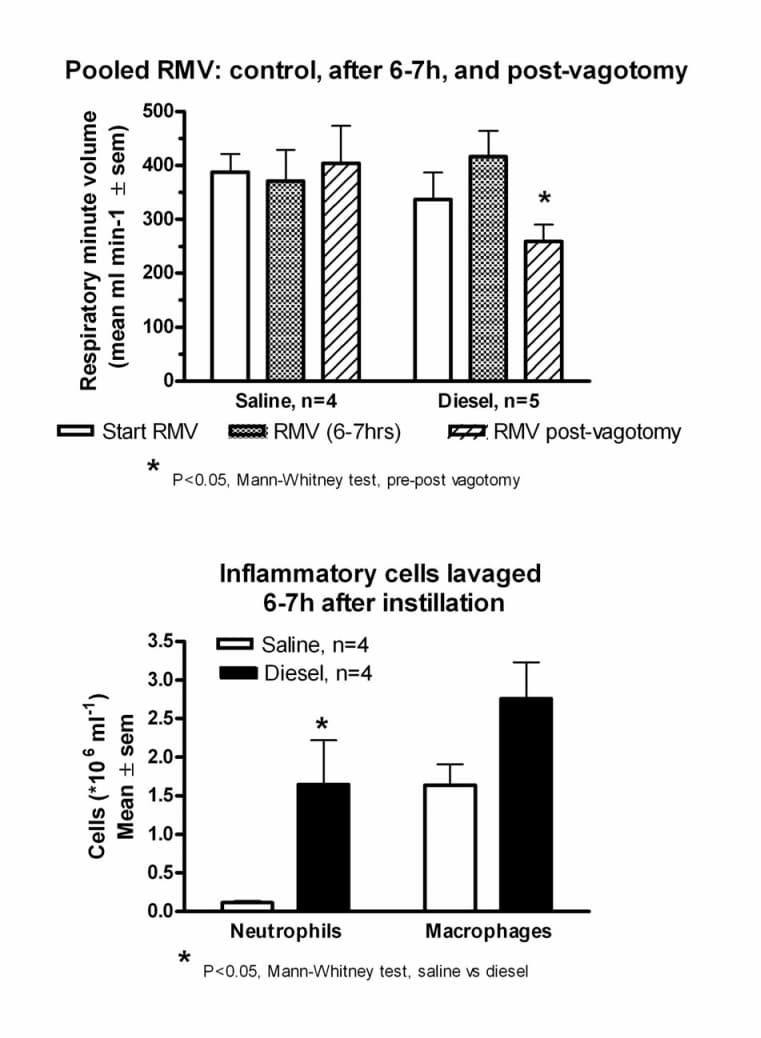We investigated whether inflammatory reflexes (Tracey, 2002) can be evoked via the vagus nerve following instillation of diesel particulate into the upper airways of anaesthetized rats. Experiments were in accord with UK Home Office regulations. Adult male Wistar rats (mean s.e.m. body weight 335 21g, n=9) were anaesthetized with urethane (ethyl carbamate 25% w/v aqueous solution, 6 ml kg-1 i.p. single dose). Ventilation (respiratory minute volume, RMV) was measured via an electrospirometer connected to a tracheal cannula and recorded on a MacLab. Arterial blood pressure and blood gases were measured. Diesel particulate matter (Diesel): standard reference material (SRM) 2975 from the National Institute of Standards and Technology (NIST) USA was dispersed in saline at a concentration of 1mg ml-1. Saline or diesel, 0.5ml, was instilled at the carina over 15s, and 6-7 h later the vagus nerves were sectioned in the neck. Ten minutes post-vagotomy the animal was killed humanely, the lungs removed, lavaged with saline and the neutrophil and macrophage content of the lavage measured.Results obtained (Figure 1) show that vagotomy significantly reduced RMV in animals that received diesel, but not those given saline. Neutrophils increased significantly in the lungs of diesel-treated rats, consistent with inflammation, but not in the saline controls. The increase in macrophages following diesel was not statistically significant.In conclusion, this evidence suggests that diesel particulate evokes an acute inflammatory reflex involving the vagus nerve, and further studies using this model will enable the mechanisms activated by diesel particulate, and the contribution made by afferent and efferent vagal fibres, to be determined.
University of Glasgow (2004) J Physiol 557P, C100
Communications: Vagal reflexes acutely induced by instillation of diesel particulate into airways of anaesthetized rats
D. McQueen (a),J.McNeilly (b),N.Barton (a),S.Bond (a) and K. Donaldson (b)
(a) Neuroscience, University of Edinburgh Medical School, Edinburgh, UK and (b) Respiratory Medicine, University of Edinburgh Medical School, Edinburgh, UK
View other abstracts by:
Where applicable, experiments conform with Society ethical requirements.

